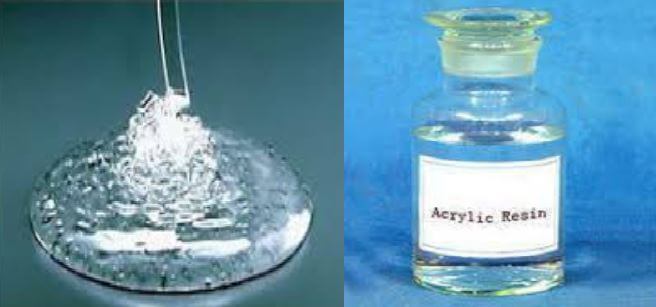The polymerization of acrylic monomers results in the production of the synthetic material known as acrylic resin. Polymethyl methacrylate, generally known as acrylic glass or plexiglass, is the type of acrylic resin that is used the most frequently. It is abbreviated as PMMA. Other kinds of acrylic resins include polyacrylates, polymethacrylates, and copolymers of acrylic and methacrylic acids. Polyacrylates are a type of polyacrylate. Polymethacrylates are a type of polyacrylate.
Acrylic resin is a thermoplastic, which means that it can be melted down and reshaped into a variety of various forms without the material’s qualities being altered. It is also a transparent material that allows light to pass through, which makes it a perfect replacement for glass in many different applications.
Advantages of Using Acrylic Resin
Because of its many desirable properties, acrylic resin is widely used across a wide variety of business sectors. A few examples of these advantages are as follows:
Durability
Acrylic resin is a hardy polymer that is able to survive severe environmental conditions such as ultraviolet (UV) light, solvents, and high temperatures. Because of this, it is an excellent choice for use in applications that are exposed to the elements, such as signs, windows, and lighting fixtures.
Transparency
Acrylic resin is a see-through polymer that lets as much as 92% of light pass through it. Because of this property, it is an excellent choice as a material for use in applications that call for transparency, such as screens, windows, and lenses.
Easy on the Shoulders
Acrylic resin is a substance that is lightweight and can be up to fifty percent lighter than glass. This not only makes it simpler to handle and carry, but it also brings down the overall cost of the installation.
Versatility
Acrylic resin is a versatile substance that may be used for a wide variety of purposes since it can be easily molded and moulded into a variety of different forms. To generate a variety of other aesthetically pleasing effects, it may also be colored, painted, or printed.
Safety
Acrylic resin is a safer alternative to glass since it does not shatter and does not present a major danger of injury in the event that it is broken. Glass is a common material used in many different applications. Because of this, it is an excellent choice for use in applications in where safety is an important consideration, such as skylights and aquariums.
Applications for Acrylic Resin
Acrylic resin is put to use in a wide variety of contexts, including the following:
Automobile Manufacturing Industry
In the automotive sector, acrylic resin is utilized for the production of headlights, taillights, and mirrors. In addition to that, it is utilized in the production of window glazing, instrument panels, and trim parts.
Building and Construction Sector
Windows, skylights, roofing, and facade systems are all constructed with acrylic resin, which is employed in the construction sector. In addition to that, it is utilized in the production of noise barriers, lighting fixtures, and signage.
Goods Sold to the Public
Acrylic resin is a material that can be found in a variety of consumer goods, including bathtubs, shower enclosures, and aquariums. In addition to that, it is utilized in the production of photo frames, exhibition cases, and lighting fixtures.
The Healthcare Sector
Acrylic resin is a material that is frequently utilized in the medical field for the production of dentures, contact lenses, and orthopedic implants. Incubators, oxygenators, and centrifuges are some examples of the types of medical devices that make use of it.
Conclusion
Acrylic resin is a flexible substance that may be used in a variety of applications and has a number of benefits, including longevity, transparency, low weight, adaptability, and safety. It finds employment in a wide variety of industries, including the automotive, construction, consumer goods, and medical equipment industries, among others, for applications such as parts of automobiles. Because of its one-of-a-kind qualities and several advantages, it is a material that is well suited for a wide variety of uses, and it is anticipated that its utilization will increase in the years to come.



